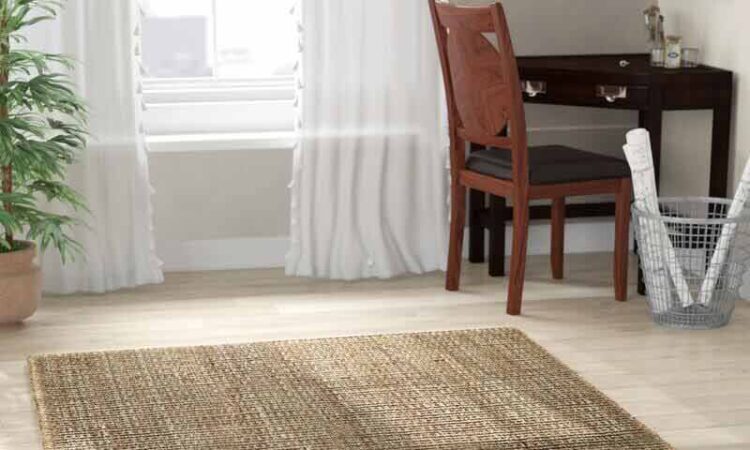Can you provide tips on choosing the appropriate material for a Sisal rug based on the room’s purpose and foot traffic?

When choosing the appropriate material for a sisal rug based on the room’s purpose and foot traffic, consider the following tips:
Durability and Comfort:
Sisal rugs are known for their durability and resilience, making them suitable for high-traffic areas. However, if the room experiences heavy foot traffic, opt for a sisal rug with a tighter weave and higher pile height to withstand the wear and tear. Sisal rugs have a coarse texture, which may not be as soft underfoot as other materials. If comfort is a priority, consider adding a rug pad underneath to provide cushioning and enhance the comfort level.
Moisture and Stain Resistance:
Sisal is a natural fiber that can be prone to staining and moisture absorption. Assess the room’s purpose and potential exposure to spills or moisture. If the room is prone to spills, consider a sisal rug with a stain-resistant treatment or choose a different material that is more resistant to moisture.
Maintenance:
Sisal rugs require regular maintenance to keep them looking their best. They are best suited for rooms with low to moderate foot traffic, as excessive wear can lead to fraying or unraveling. Regular vacuuming and spot cleaning are necessary to keep the rug clean and in good condition.
Style and Aesthetic:
Sisal rugs have a natural, earthy appearance that adds warmth and texture to a space. Consider the room’s decor style and choose a sisal rug with color and pattern that complements the overall aesthetic. Sisal rugs are available in various shades, from light neutrals to darker tones, allowing you to find one that suits your design preferences.
How do sisal rugs help furniture arrangements and create a cohesive visual flow in a room?
Sisal rugs can be instrumental in furniture arrangements and in creating a cohesive visual flow in a room. Here’s how they can help:
Anchoring Furniture: Sisal rugs provide a defined and stable base for furniture placement. Placing furniture, such as sofas, chairs, or tables, on or around the sisal rug, creates a visual anchor and helps to group the furniture. This arrangement enhances the sense of unity and organization in the room.
Creating Zones: Sisal rugs can help delineate different functional zones within a space. For example, in an open-concept living area, a sisal rug can be used to define the seating area, distinguishing it from the dining or entertainment zone. This zoning creates a sense of purpose and order, allowing each area to have its own designated space.
Visual Continuity: Sisal rugs with their natural, neutral tones tend to blend seamlessly with various decor styles and color schemes. This visual continuity helps to connect different furniture pieces and elements in the room, creating a harmonious flow. The rug acts as a unifying element, tying together disparate elements and creating a cohesive visual narrative.
Balance and Proportion: Sisal rugs can contribute to the balance and proportion of a room. By choosing an appropriately sized rug that accommodates the furniture arrangement, it helps to establish a sense of harmony and scale. A rug that is too small can make the furniture appear disjointed, while a rug that is too large can overwhelm the space. Finding the right balance ensures that the furniture arrangement feels well-proportioned and visually pleasing.




